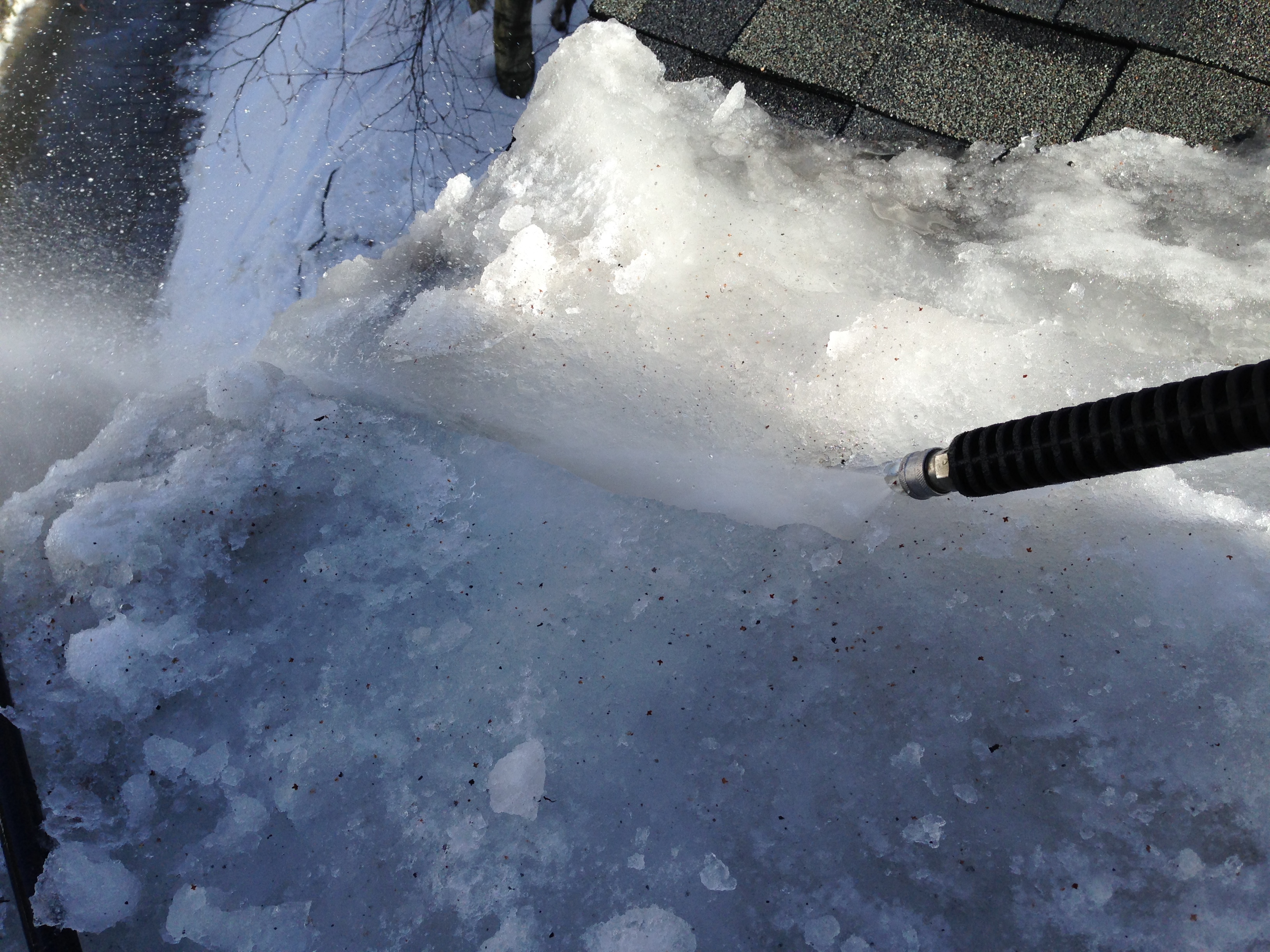

Many of these techniques can cause more damage than the ice dams themselves, so you’ll want to avoid them as much as possible.

There’s a lot of misinformation out there regarding ways you can remove an ice dam. This cold air will help regulate the attic’s temperature and cause the leaking water to freeze, giving you time to complete a repair. If the ice dam has already done some harm to your roof and you notice a leak, you can take a fan to your attic and blow some cold air on the hole. Remember that you don’t want to spray pressurized water directly against the shingles to prevent damage. This water will naturally dissolve the ice and allow it to drain through your gutters. Use Hot WaterĪn easy way to melt an ice dam on your roof is to spray it with hot water. The de-icer will slowly melt the ice, and the stockings ensure you don’t end up with calcium chloride all over your roof when the job is complete. Use De-IcerĪ trick that some homeowners use is putting calcium chloride de-icer into a set of pantyhose or inside a mesh bag and throwing it onto the roof. Keep in mind that this method will only work if you’re expecting moderate temperatures in the next few days. Snow acts as insulation for the ice, so if you don’t have snow on top of it, the ice will melt faster in sunny conditions. One method that you can try is pulling as much of the snow off your roof as possible with a rake or broom. When you find yourself in this position, don’t panic because there are some things you can do to melt this ice before it does significant damage. It’s difficult to tell if your attic is transferring too much heat to your roof until you end up with an ice dam. Therefore, you’ll want to take as many precautions as possible to prevent this damage to your roof. You could end up with a significant ice dam on your roof that won’t melt until you have a prolonged warm period if you don’t address it early. The snow will often freeze as droplets are running off the side of the roof, forming icicles that overhang the eaves.Īs more snow melts and refreezes, the ice dam becomes more prominent and invasive, eventually preventing any water from running off the roof at all.

This melting often occurs during the day, and then frigid temperatures at night can refreeze the melting snow. You’ll find the ice dams are more common on homes with abnormally warm attics because the heat transfers to your shingles and causes the ice to melt more rapidly. Ice dams form when snow on your roof melts and then freezes again, which happens all the time in the winter.


 0 kommentar(er)
0 kommentar(er)
